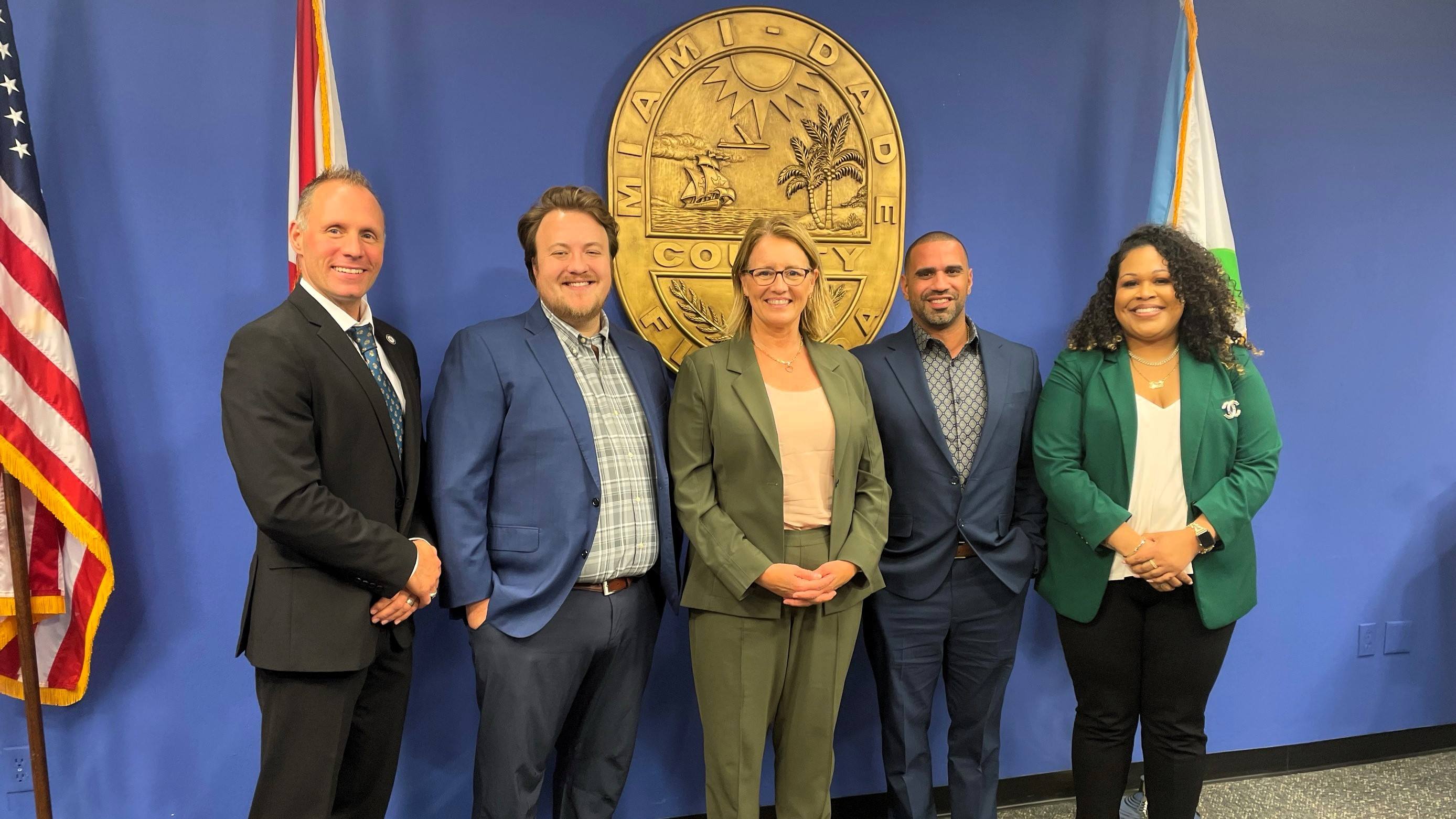
People in the photo (left-to-right): Miami-Dade County Department of Emergency Management Assistant Director Jesse Spearo, Phd., EMX Participant Chris Taylor, FEMA Administrator Deanne Criswell, FEMA Region 4 Emergency Management Specialist Virgilio “Chris” Perez, FEMA Management Program AnalystBianca Perez.
As disasters become more frequent, severe and complex, the demands placed on emergency managers continue to increase. It is important for FEMA to understand the changing needs of local, state, territorial and Tribal Nation emergency managers so they can continue to help people before, during and after disasters.
To further enable emergency managers and build capacity, FEMA created the Emergency Manager Exchange Program. The program brings state, local, Tribal Nation and territorial emergency managers and government officials to Washington, D.C., to work with FEMA leadership on the development and implementation of policies and programs.
The exchange can help align priorities, foster collaboration, share best practices and innovative solutions – all while giving participants a chance to develop as professionals and broaden their understanding of policies, regulatory requirements and challenges.
One recent participant, Christopher Taylor, recently joined FEMA after completing his exchange and shared his experience in the program.
Can you share a bit about your career journey? What state agency did you work for and what was your job?
At the time, I was an Emergency Management Planner for the Miami-Dade County Department of Emergency Management. My focus was on Intergovernmental Affairs and Whole Community Integration. I have always had a passion for bringing people into the fold of emergency management who historically have not participated in the planning process, and we were able to accomplish that at Miami-Dade Department of Emergency Management.
South Florida is such an incredible place to learn and practice emergency management due to its high frequency of natural disasters, vulnerability to climate change impacts, diverse populations, economic significance and intergovernmental structures that together provide a dynamic and challenging setting for developing emergency response strategies.
Today, I am proud to have joined the FEMA family in the Office of External Affairs as an Intergovernmental Affairs Specialist.
What led you to take apply to the program?
During the tragic 2021 Surfside Building Collapse (EM-3560-FL), I had the opportunity to work closely with the FEMA responders on scene. I was able to experience firsthand the incredible work that FEMA responders provide to the community while also working through the friction between local governments and federal partners. After that event, I wanted to learn everything I could about FEMA and how to better collaborate with the agency at the local level. The exchange program gave me that opportunity.
What was your job during the exchange?
During the exchange, I was placed in the Office of Response and Recovery (ORR) Field Operations Directorate. While I was there, I experienced the amazing work that these dedicated individuals are doing for responder readiness and support. In emergency management we often become obsessed with incidents and planning for them that we sometimes overlook the responders themselves. It was great to see that FEMA was not overlooking that important aspect. Shout out to the Readiness Branch and all the great work they are doing.
I worked on various projects for including writing a published white paper and working on a Readiness Dashboard to track resource gaps and risks from a local perspective.
I supported several federal disasters in the National Response Coordination Center (FEMA’s response center) and was able to visit the Personnel Mobilization Center in Texas. I met President Biden, DHS Secretary Mayorkas, Administrator Criswell and Deputy Administrator Hooks!
In what ways did the Exchange program improve your understanding of emergency management?
This program gave me the opportunity to see emergency management from the federal side of things. It completely opened my eyes to the challenges of supporting the entire nation and why FEMA operates the way it does. The program made me an overall better emergency manager, and I was happy to take that back to my home organization.
What were the biggest differences between working for the state versus the federal government?
The size! The sheer scale of response at the national level was almost impossible to comprehend at the local level. I think locally you can connect more with your constituents and provide a more tailored approach to emergency preparedness and response that just isn’t possible at the federal level.
How did your previous state experience prepare you for your role at FEMA?
I believe my local experience was an asset to FEMA. The planning and policy separation between FEMA and state, local, Tribal Nation and territorial partners can create issues if those conversations with local stakeholders are not had. I’d like to think I was able to help bridge that gap.
FEMA is looking for experienced state, local, Tribal Nation and territorial emergency managers to apply for our Emergency Manager Exchange program. Visit Emergency Manager Exchange | FEMA.gov to learn more.

